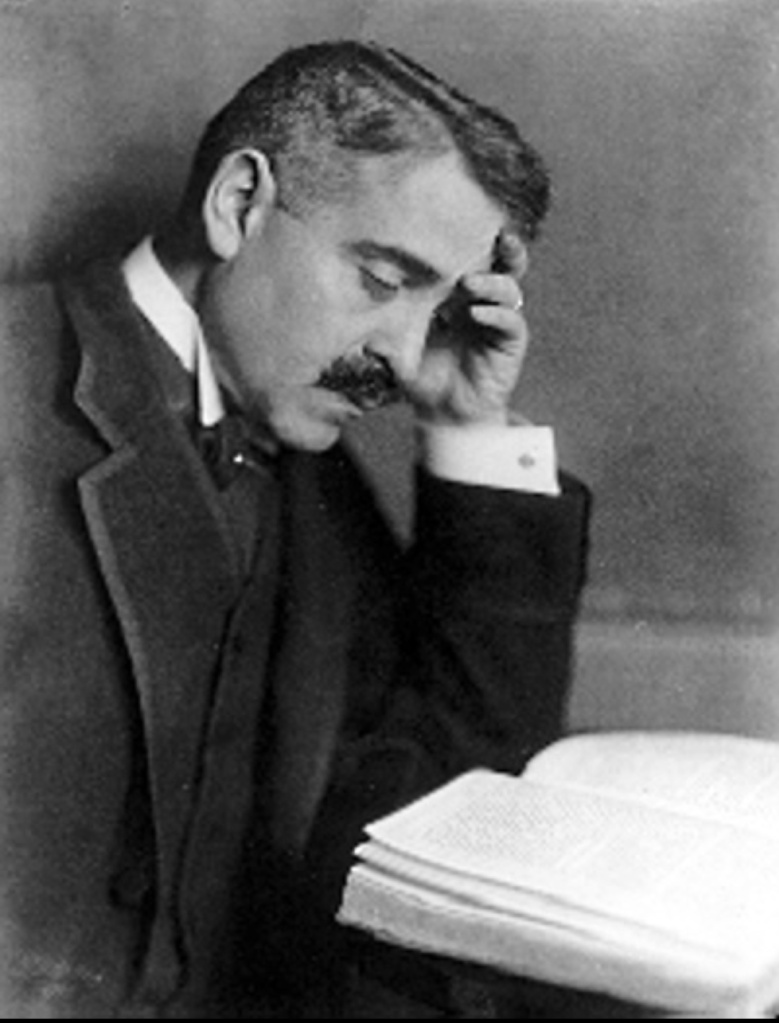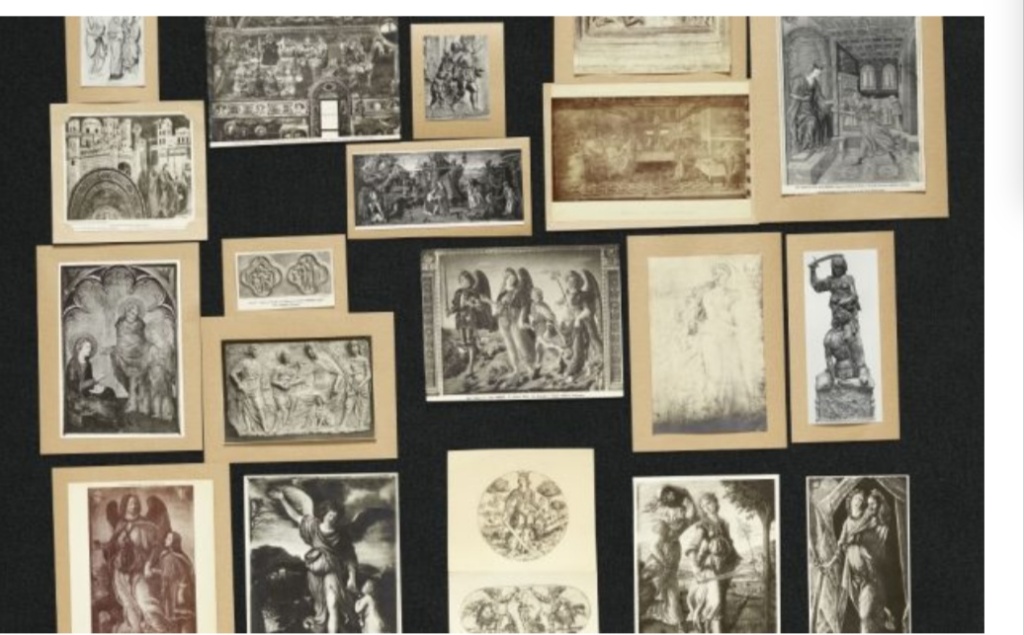Abbiamo cercato di ricostruire, in modo molto riduttivo, l’eredità di uno dei più grandi storici dell’arte, Aby Warburg, come gli piaceva definirsi “Amburghese di cuore, ebreo di sangue, dell’anima fiorentina”. Ne parleremo attraverso la sua più grande eredità, gli Atlanti della memoria.

Aby Warburg nasce ad Amburgo da una potente famiglia di banchieri ebrei. Rinuncia al diritto di primogenitura in favore di suo fratello Max a patto che quest’ultimo faccia fronte per tutta la vita alla sua richiesta di libri. Contrariamente al volere dei genitori si iscrive alla facoltà di storia dell’arte, frequentando le lezioni di Karl Lamprecht e Carl Jiusti.


Mnemosyne è un atlante figurativo composto da una serie di tavole, costituite da montaggi fotografici che assemblano riproduzioni di opere diverse: testimonianze di ambito soprattutto rinascimentale (opere d’arte, pagine di manoscritti, carte da gioco, etc.); ma anche reperti archeologici dell’antichità orientale, greca e romana; e ancora testimonianze della cultura del XX secolo (ritagli di giornale, etichette pubblicitarie, francobolli).
L’Atlante di Aby Warburg è un oggetto di culto per gli storici dell’arte e gli appassionati di cultura visuale di tutto il mondo. Con questo progetto, infatti, portato avanti negli anni Venti del Novecento e lasciato incompiuto, lo studioso tedesco rivoluzionava il modo in cui analizziamo le immagini d’arte e contestualizziamo il loro ruolo nella società. In polemica con quella che considerava la “storia dell’arte estetizzante”, Warburg sperimentò un metodo di ricerca del tutto originale, basato sull’accostamento di immagini provenienti da epoche e contesti diversi, che venivano giustapposte su grandi pannelli scuri. Osservando le fotografie e rivedendone costantemente l’ordine, Warburg individuò una serie di forme e temi ricorrenti che attraversano il tempo: dall’antichità al contemporaneo, passando per l’amato Rinascimento. Nel farlo redasse pagine che scrivevano una nuova storia, attingendo alla filosofia, all’antropologia e agli studi sociali. Obiettivo dell’Atlante è illustrare i meccanismi di tradizione di temi e figure dall’antichità, orientale e greco-romana – all’attualità, con particolare riguardo alla ripresa di moti, gesti e posture che esprimono l’intera gamma dell’eccitazione emozionale (l’aggressione, la difesa, il sacrificio, il lutto, la malinconia, l’estasi, il trionfo, etc.). Si tratta di Pathosformeln, formule espressive dell’emozione dedotte direttamente in forma artistica dai modelli antichi, o anche riemergenti senza diretto collegamento ai modelli, nella forma di engramma, esito spontaneo dell’istinto gestuale umano.

English version
Aby Warburg, Mnemosyne, Atlas of memory
We tried to reconstruct, in a very reductive way, what is the legacy of one of the greatest historians of art, Aby Warburg, as he liked to call himself “Hamburger at Heart, Jew of blood, of Florentine soul”. We will talk about it through his greatest legacy, the Atlanti of memory.
Aby Warburg was born in Hamburg to a powerful family of Jewish bankers. He renounces the right of primogeniture in favor of his brother Max as long as the latter copes with his request for books all his life. Contrary to the will of the parents, he enrolls in the faculty of art history, attending the letture of Karl Lamprecht and Carl Justi.
Mnemosyne is a figurative atlas composed of a series of tables, consisting of photographic montages that assemble reproductions of different works: testimonies of above all Renaissance scope (works of art, pages of manuscripts, playing cards, etc.); but also archaeological finds of Eastern, Greek and Roman antiquity; and also testimonies of 20th century culture (newspaper clippings, advertising labels, stamps).
Aby Warburg’s Atlas is an object of worship for art historians and visual culture enthusiasts around the world. With this project, in fact, carried out in the twenties of the twentieth century and left unfinished, the German scholar revolutionized the way we analyze art images and contextualize their role in society. In controversy with what he considered the “estonian art history”, Warburg experimented with an entirely original method of research, based on the juxtaposition of images from different eras and contexts, which were juxtaposed on large dark panels. Observing the photographs, and constantly reselling their order, Warburg identified a series of recurring forms and themes that span time: from antiquity to the contemporary, passing through the beloved Renaissance.In doing so, he wrote pages that wrote a new story, drawing on philosophy, anthropology, and social studies. The aim of the Atlas is to illustrate the traditional mechanisms of themes and figures from antiquity, Eastern and Greco-Roman – to current events, with particular regard to the resumption of motions, gestures and postures that express the full range of emotional excitement (aggression, defense, sacrifice, mourning, melancholy, ecstasy, triumph, etc.). It is Pathosformeln, expressive formulas of emotion deduced directly in artistic form from ancient models, or even re-emerging without direct connection to the models, in the form of an engram, spontaneous outcome of human gesture instinct.

